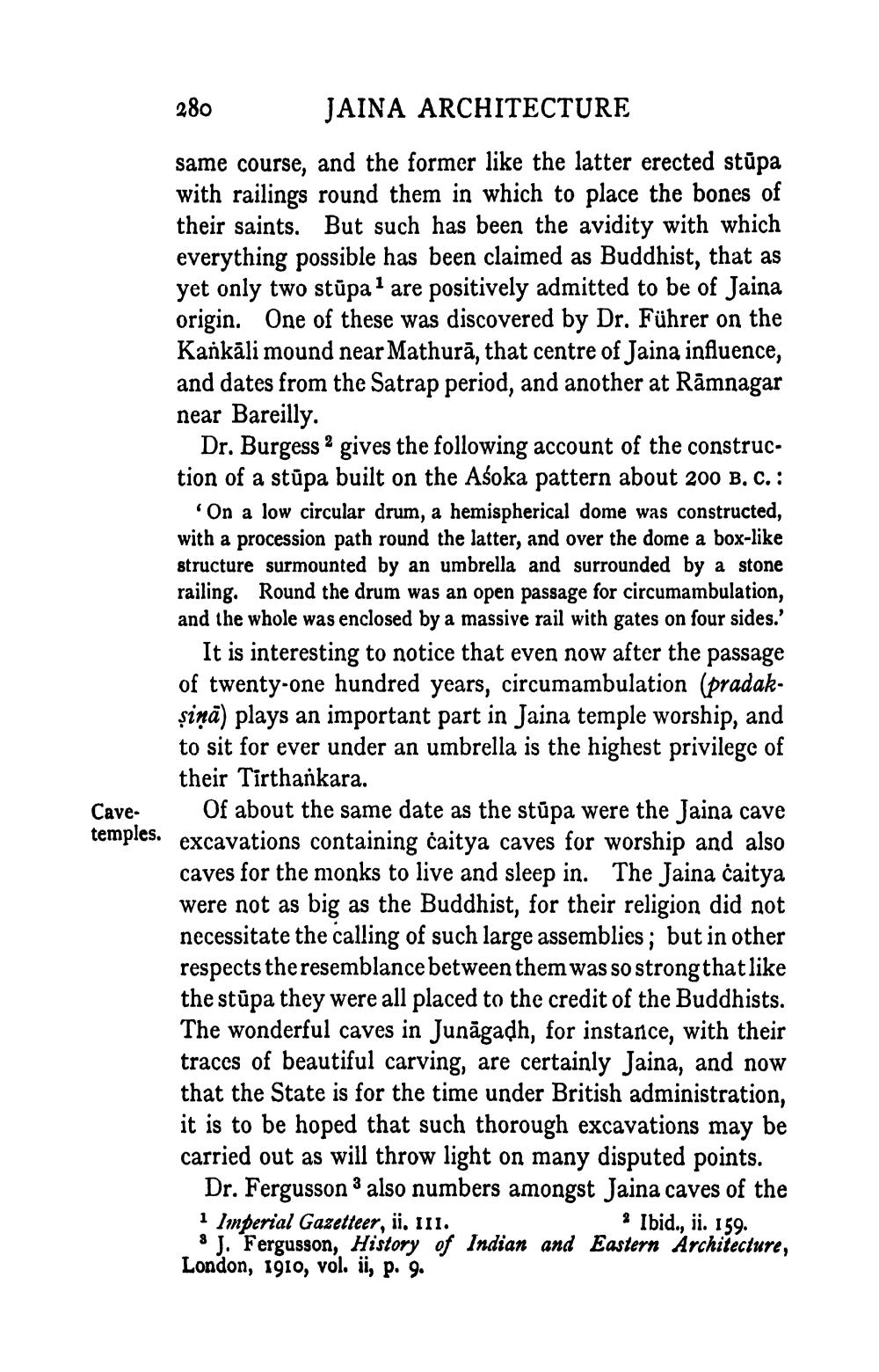________________
280 JAINA ARCHITECTURE same course, and the former like the latter erected stūpa with railings round them in which to place the bones of their saints. But such has been the avidity with which everything possible has been claimed as Buddhist, that as yet only two stūpa. are positively admitted to be of Jaina origin. One of these was discovered by Dr. Führer on the Kankāli mound near Mathurā, that centre of Jaina influence, and dates from the Satrap period, and another at Ramnagar near Bareilly.
Dr. Burgess 2 gives the following account of the construction of a stúpa built on the Aśoka pattern about 200 B.C. :
On a low circular drum, a hemispherical dome was constructed, with a procession path round the latter, and over the dome a box-like structure surmounted by an umbrella and surrounded by a stone railing. Round the drum was an open passage for circumambulation, and the whole was enclosed by a massive rail with gates on four sides.'
It is interesting to notice that even now after the passage of twenty-one hundred years, circumambulation (pradakșină) plays an important part in Jaina temple worship, and to sit for ever under an umbrella is the highest privilege of their Tirthankara.
Of about the same date as the stúpa were the Jaina cave excavations containing caitya caves for worship and also caves for the monks to live and sleep in. The Jaina čaitya were not as big as the Buddhist, for their religion did not necessitate the calling of such large assemblies; but in other respects the resemblance between them was so strongthat like the stūpa they were all placed to the credit of the Buddhists. The wonderful caves in Junāgadh, for instance, with their traces of beautiful carving, are certainly Jaina, and now that the State is for the time under British administration, it is to be hoped that such thorough excavations may be carried out as will throw light on many disputed points.
Dr. Fergusson 3 also numbers amongst Jaina caves of the 1 Imperial Gazetteer, ii. 111.
% Ibid., ii. 159. 8 J. Fergusson, History of Indian and Eastern Architecture, London, 1910, vol. ii, p. 9.
Cavetemples.




